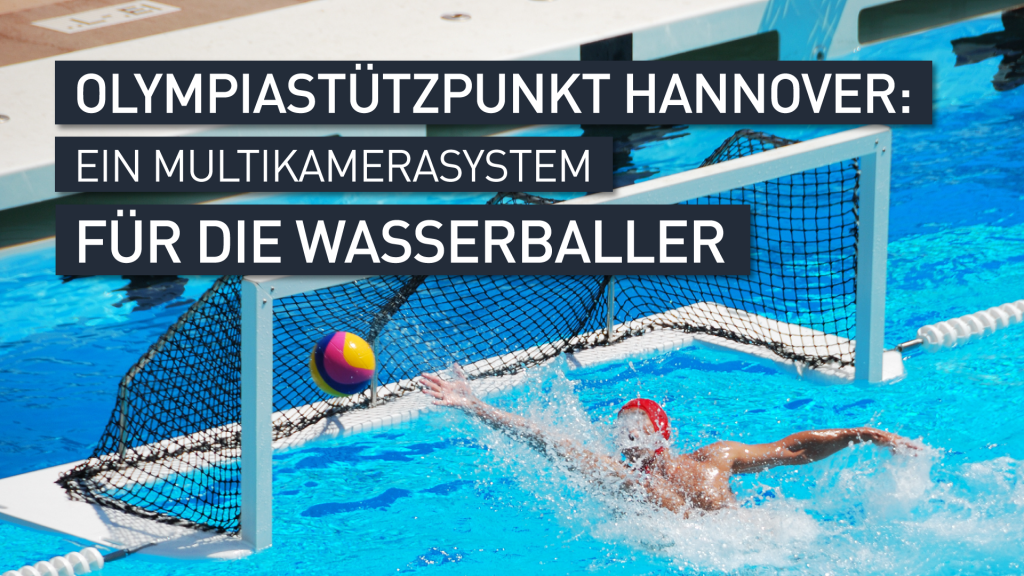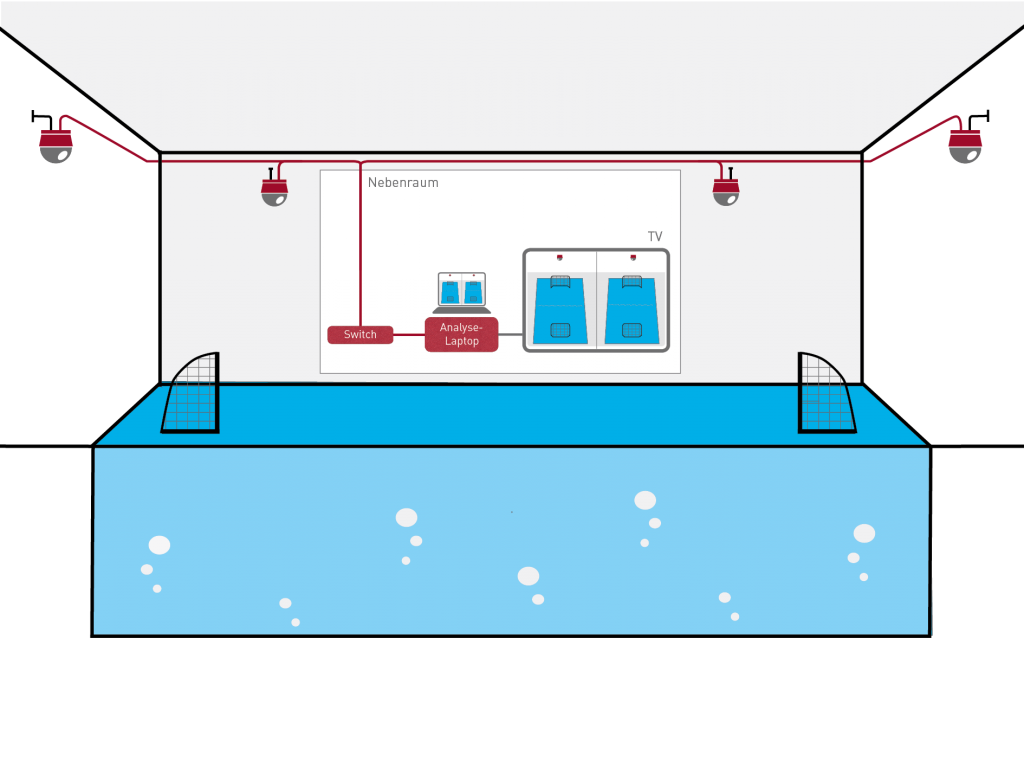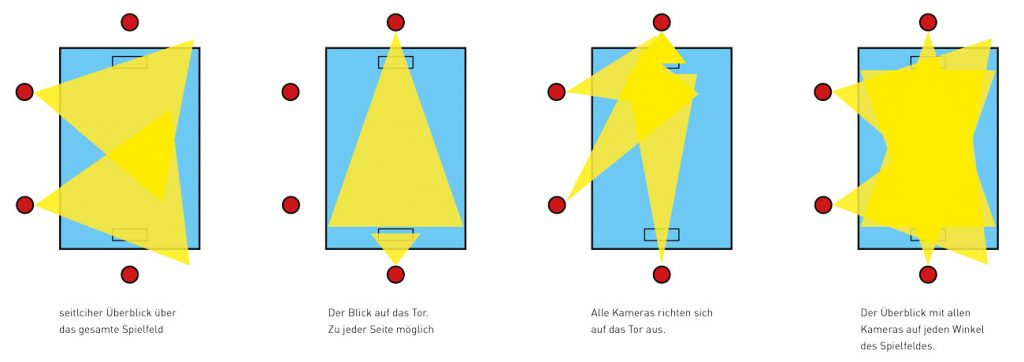
Since 2017, the already existing Federal Water Polo Base has been further developed into a high-performance federal base and national training center for the sport of water polo in Hannover.
In this context, forward-looking and innovative technologies are to find their way into the swimming pool hall. Our multicamera system utilius kiwano is one of them.
Starting point and objective:
In discussions between coaches and sports scientists, it was quickly decided that a video analysis system should be installed to support training at the federal base.
The goal of the system: The trainer should be able to give his athletes visual feedback and do so quickly and easily.
But there were other requirements as well:
For example, it should be possible to observe the entire playing field or water basin with as few cameras as possible. After all, the more shots that have to be kept in view at the same time, the more complicated the analysis becomes.
Mobility at the edge of the pool was another important issue: the coach must be able to move back and forth at the edge during a match without running the risk of tripping over technical equipment.
The installed cameras also had to be shock-protected so that they could withstand hits from flying balls without being damaged.
Implementation:
At the beginning of the project, the requirements were defined with coaches and sports scientists.
Together, we developed a requirements profile that formed the basis for the project outline. In the project sketch, all important components of the multicamera system utilius kiwano as well as the structure are described and graphically represented. This then looks like this, for example:

The project outline is the cornerstone for the bid. After this was approved, the planning phase began. Dates were set for structural measures, responsibilities and contact persons were determined.
The 2018 summer break, when the water was drained from the pool, was the perfect time to start.
Cables could now be laid to the designated camera positions. A local electrical service provider took over the work. In consultation with us, the cables were laid in the central evaluation room, where all the technology was located.
A total of four cameras were placed in the swimming hall in such a way that both the individual athlete and the entire team can be recorded from several perspectives.
PTZ cameras are used for the recordings. These can pan and zoom and thus capture situations and details in a targeted manner.
A particularly practical feature is that all cameras can be aligned at the same time at the touch of a button.
In practice, this could look like this, for example:
If goal throws are only practiced on the left side of the field in training, such a recording situation could be called "left half goal throws" and ensure that all cameras are aligned to this very left half.
The cameras mounted on the long side provide the right overview of the entire playing field.
The camera located at the front can be aligned to zoom in on the goalkeeper and record him from the front.
The camera, which is located behind the corresponding goal on the end wall, is aligned in such a way that it can capture situations from a perspective similar to that seen by the goalkeeper himself.
And the camera on the opposite wall moves flexibly to zoom in on specific game situations.

At least that was the plan. However, we faced a challenge when setting up the system.
The challenges:
Technically, everything was prepared. The 4 PTZ cameras were fixed at the right positions. The rest of the hardware, laptop, switch and TV were also installed.
So it was time for a test of the overall system.
However, the result was sobering: The cameras could not deliver the expected image quality and recorded unreliably.
Ad hoc, the problem could not be determined.
We tested hardware and software, and the electrical service provider in Hanover carried out cable and system tests.
It turned out that the data throughput limits for some cables had not been met. The installed cables from the box to the cameras did not meet the requirements and had to be replaced.
After the cables were replaced, the multi-camera system could be tested again. Fingers were crossed. This time, however, everything went flawlessly. The multi-camera system ran as planned and produced the desired results.
A training session with all the trainers could follow the same day.
Results:
Now that the multicamera system has been in use for some time, it has passed the practical test.
Especially the functions that allow the coach and also the player himself to see weaknesses and react to them immediately - no longer just verbally, but also visually - are exciting.
With the time shift function, game situations can be analyzed live at the poolside after the action - without interrupting the recording. The follow-up time of the video can be adjusted as required. It is at least 10 seconds, but can also be longer - 2 minutes or more are also no problem.
"Together with the coaches of the national base, we use the multi-camera system for immediate tactical analyses. The time-shift function makes direct feedback at the poolside possible. This is very practical and provides positive feedback from athletes and coaches."
Dr. Boris Ullrich (Coordinator Training Science)
If the requirements for the system change in the future, this is not a problem. The system is designed in such a way that it can also be supplemented with additional cameras in the future and thus grows along with the requirements.
A first expansion is planned for this year. The multicamera system is to be made even more mobile. A trolley will be purchased to accommodate a monitor and laptop. This will allow athletes to view and discuss their moves directly from the water.

Leave a Reply